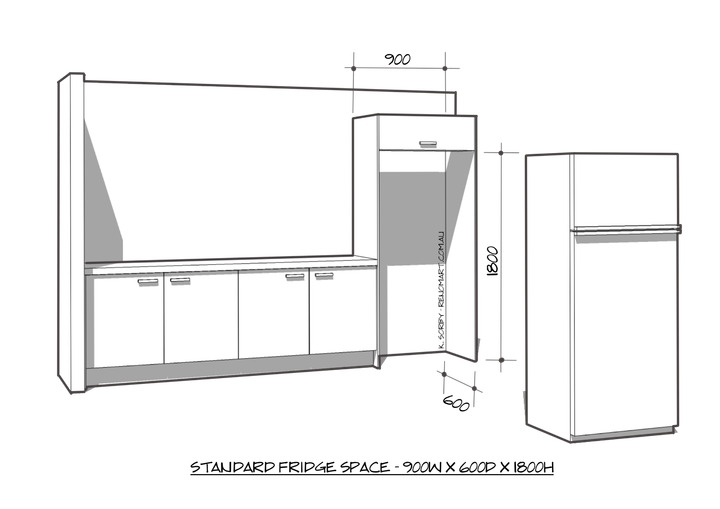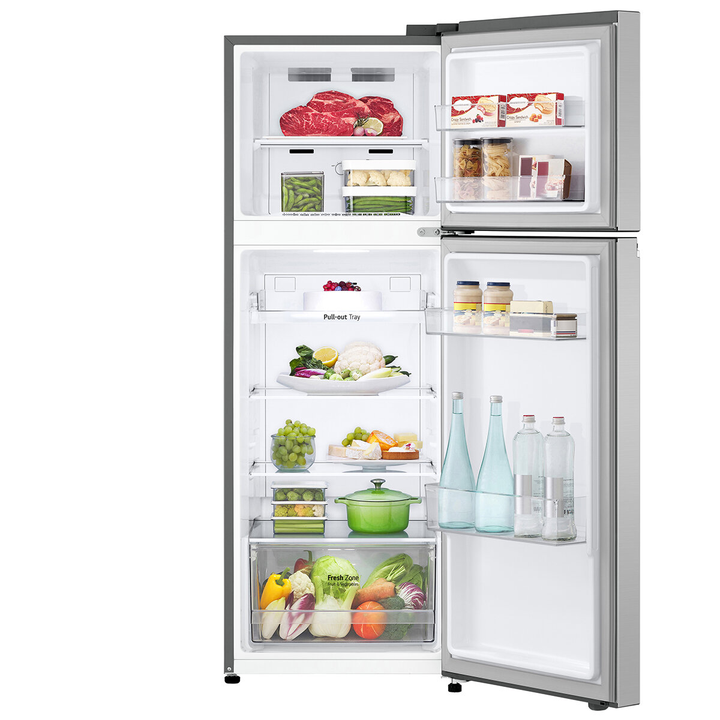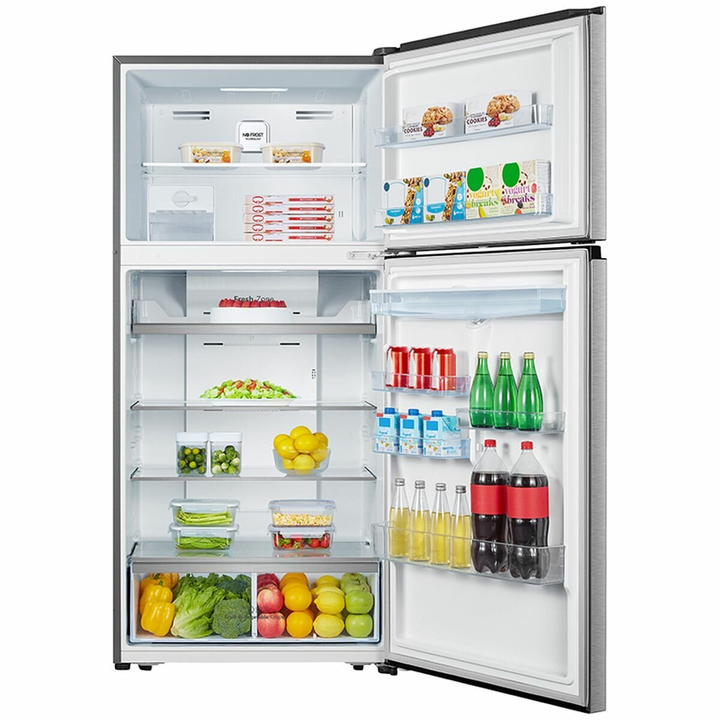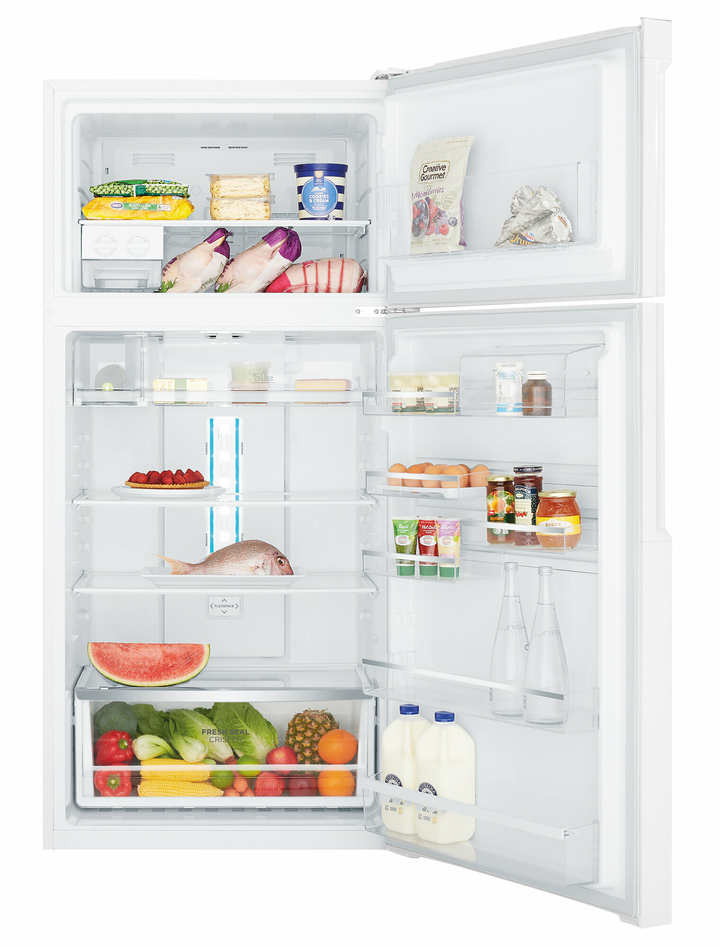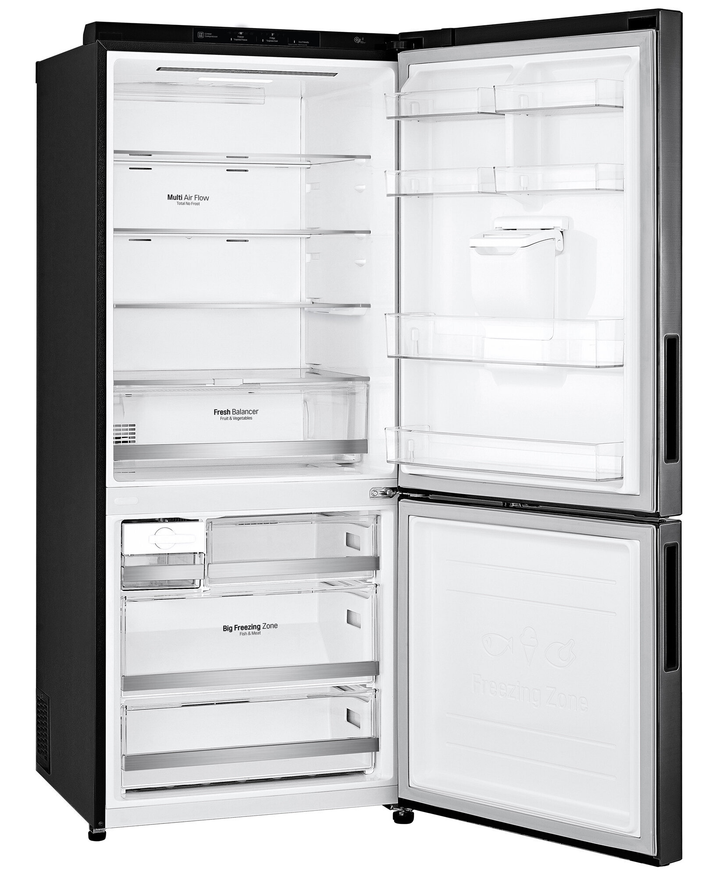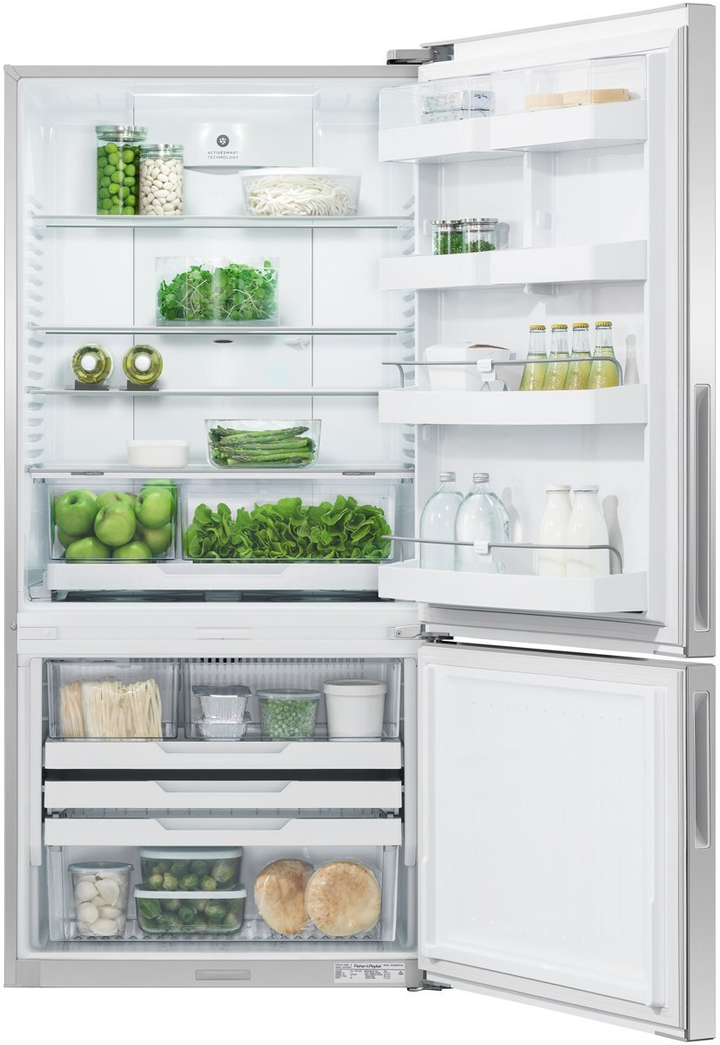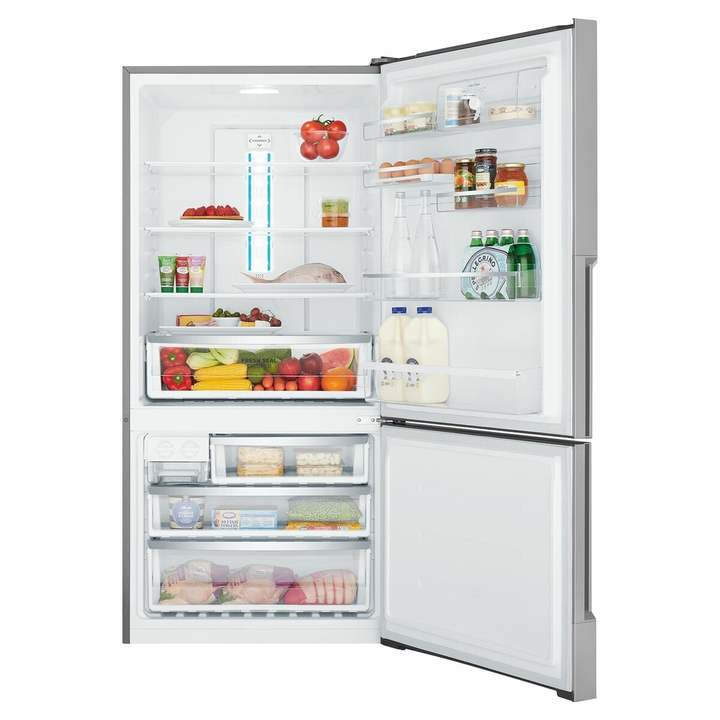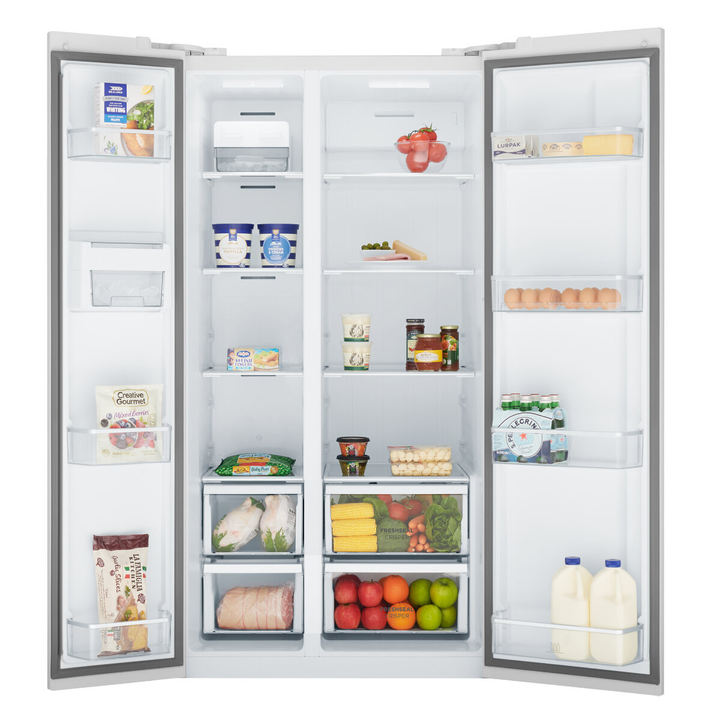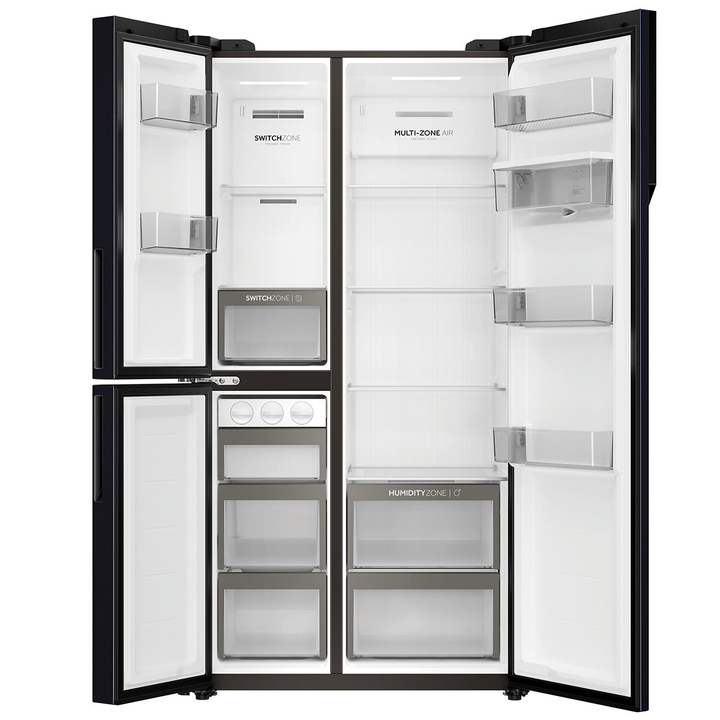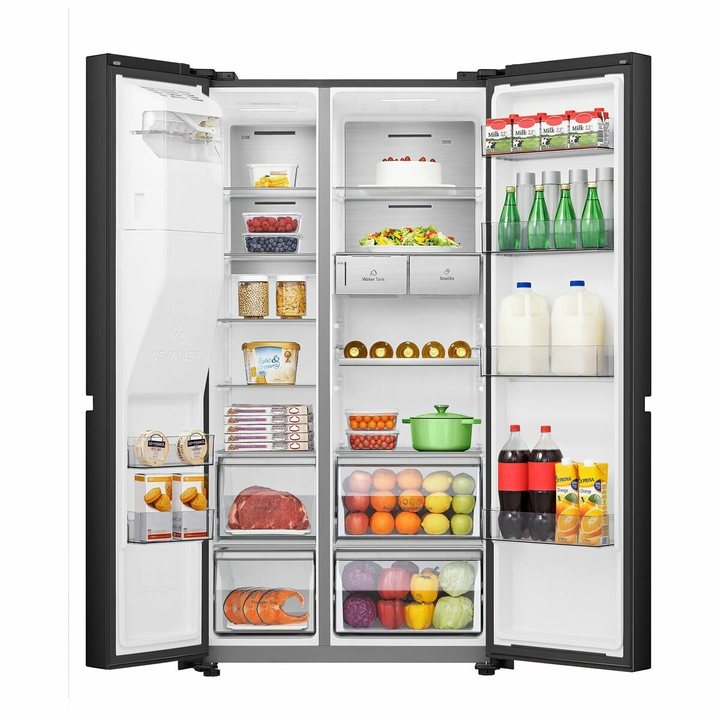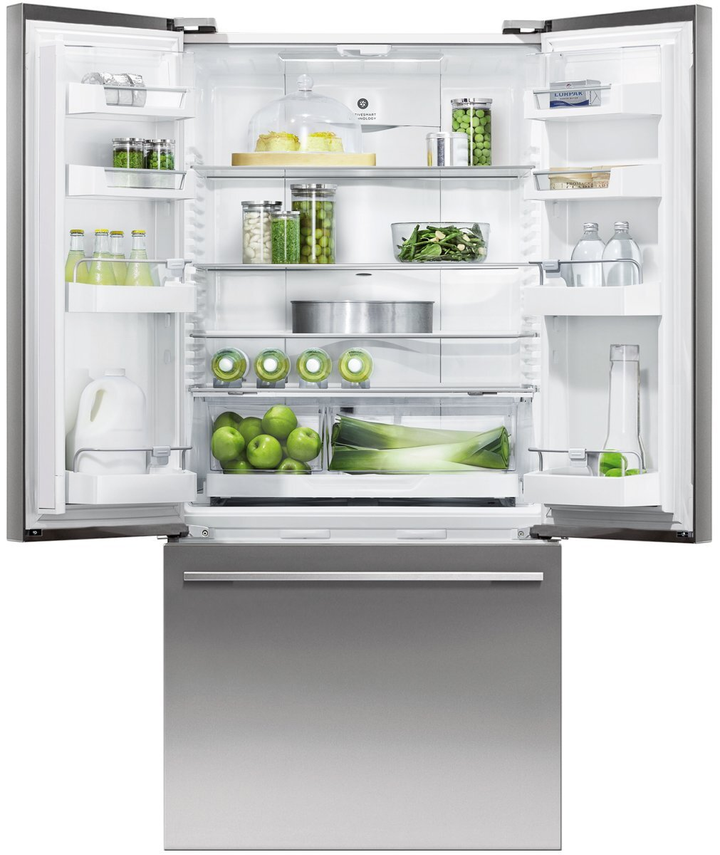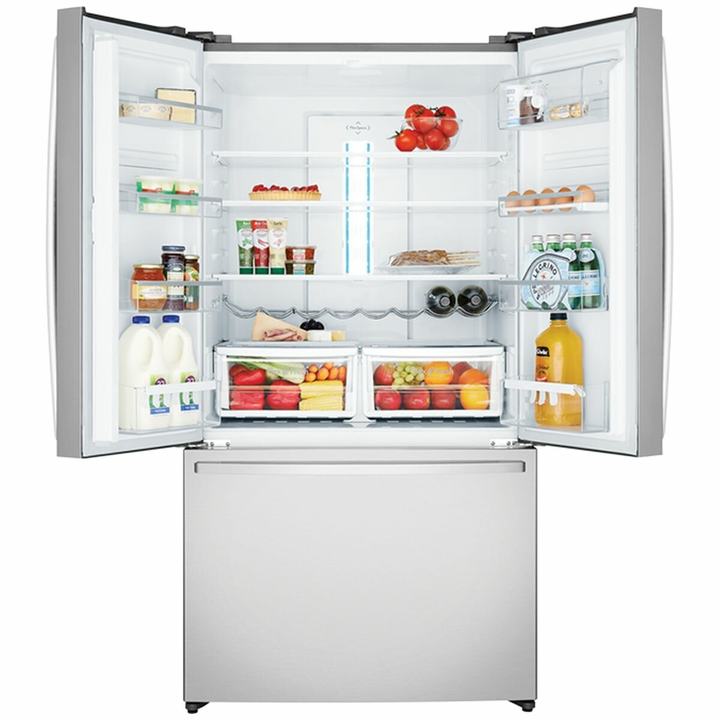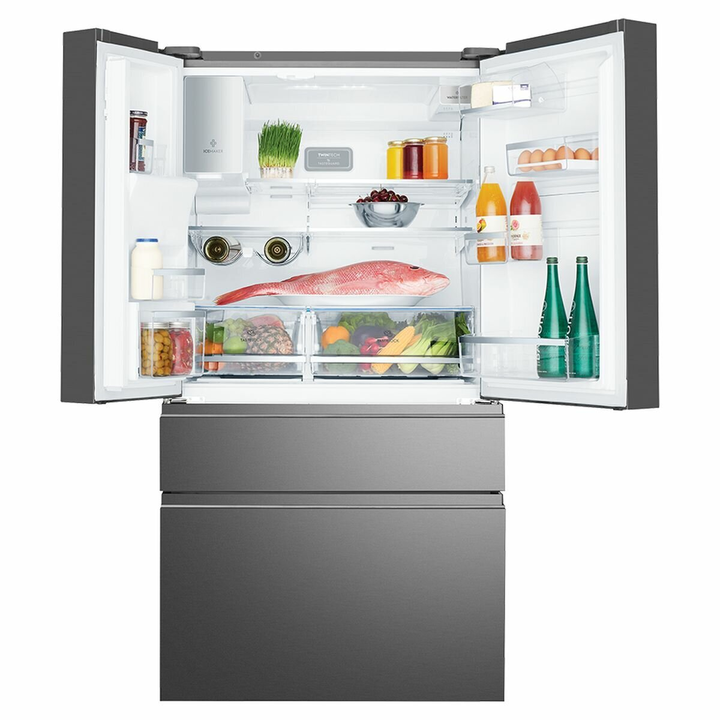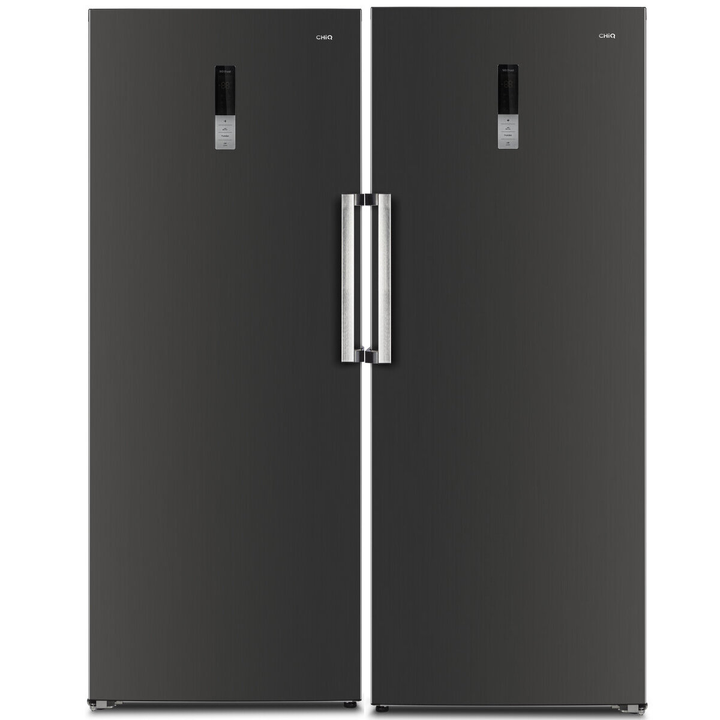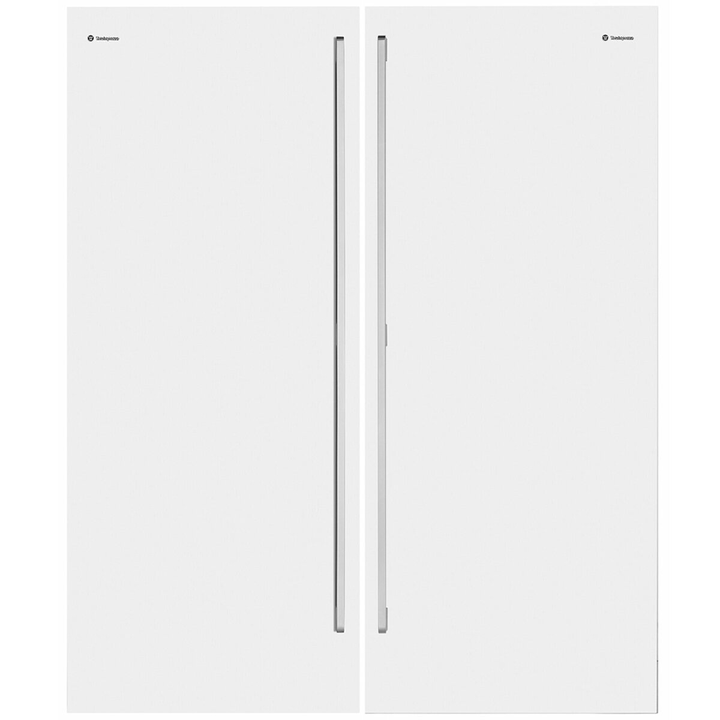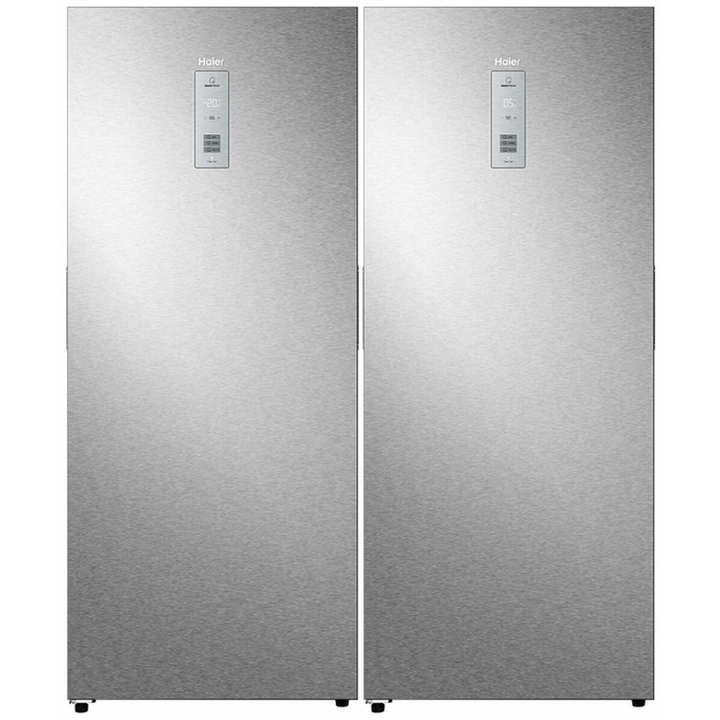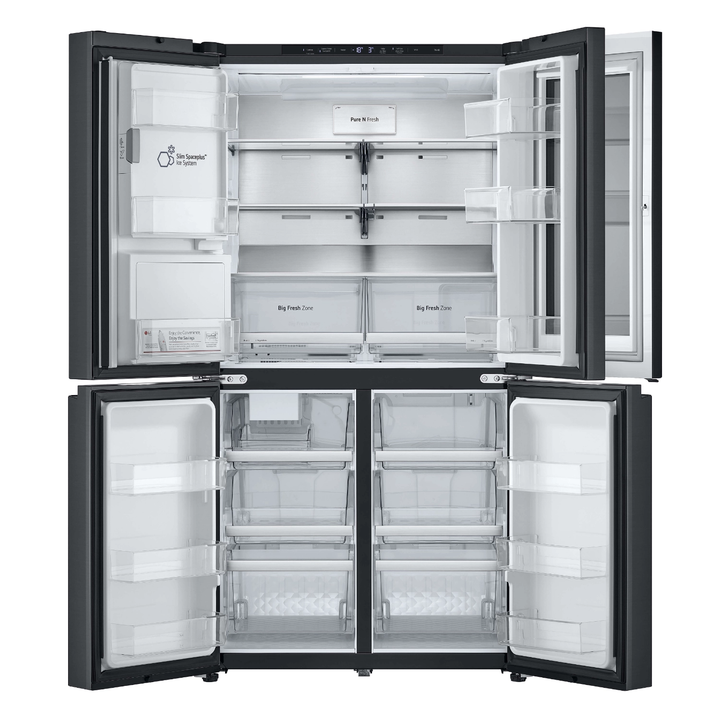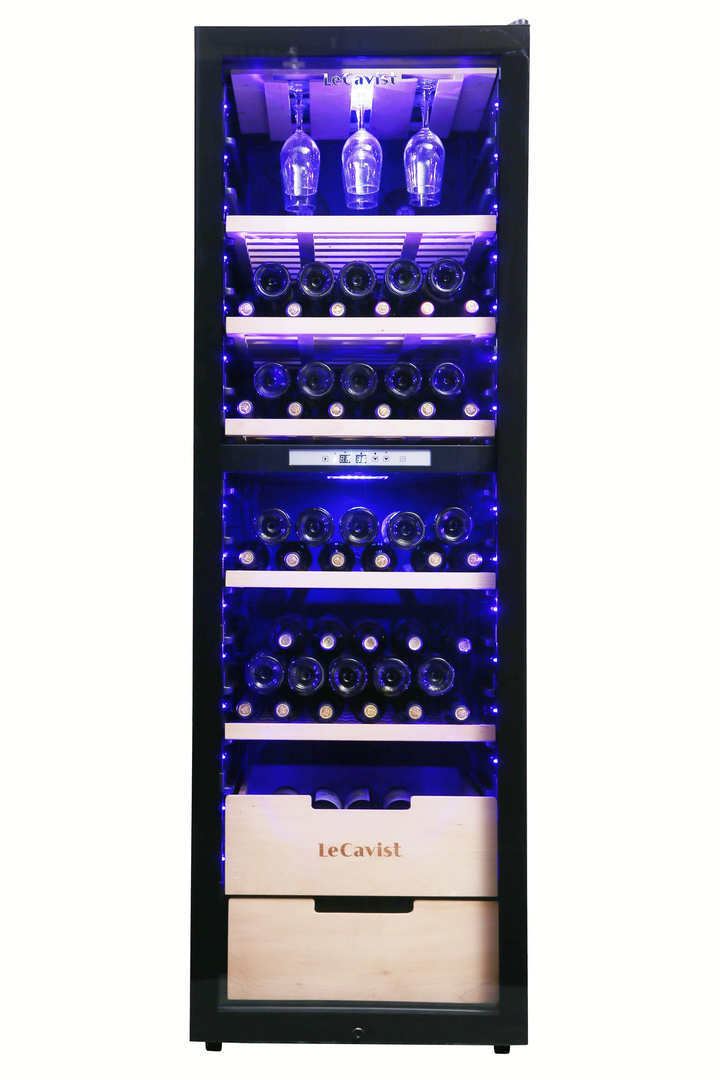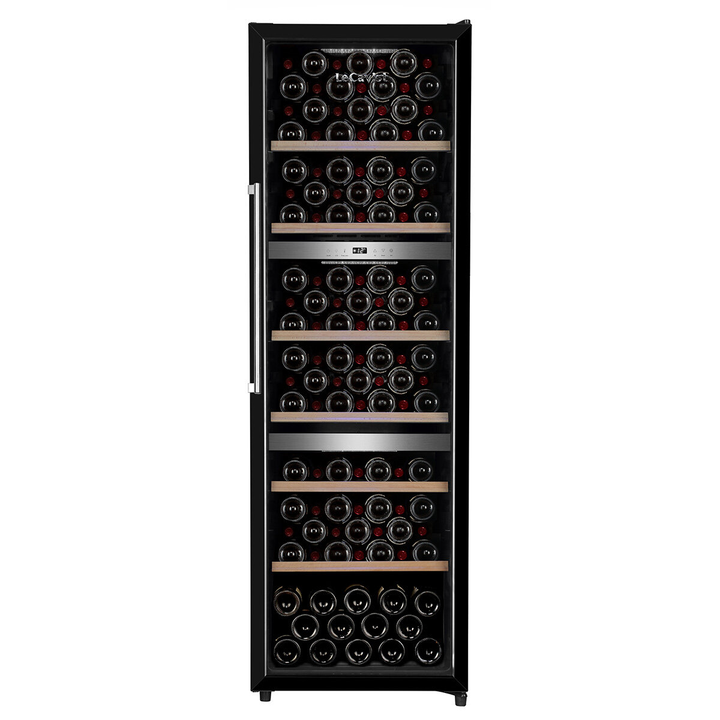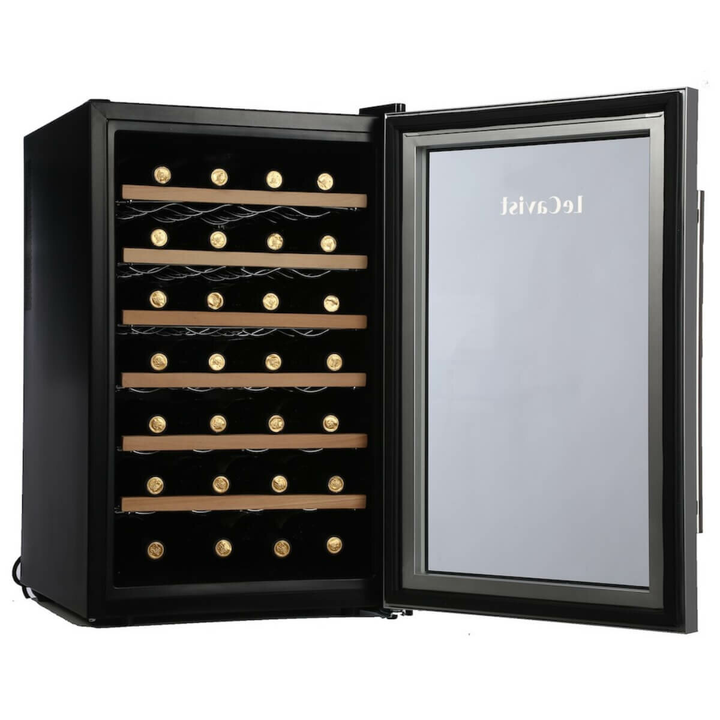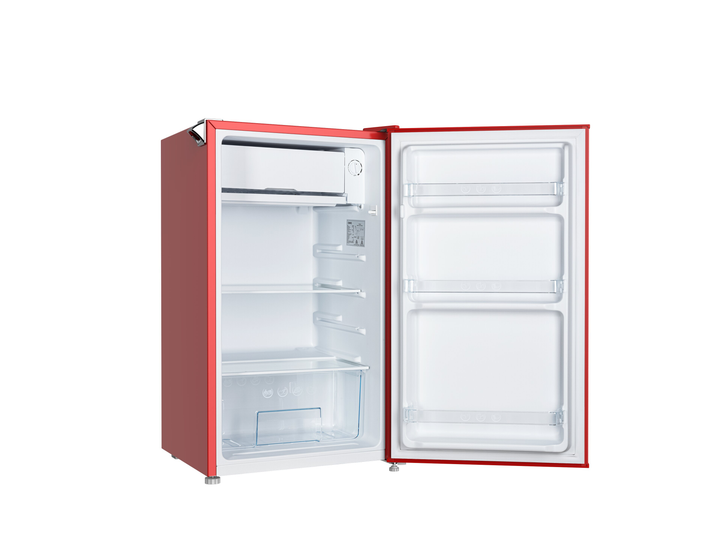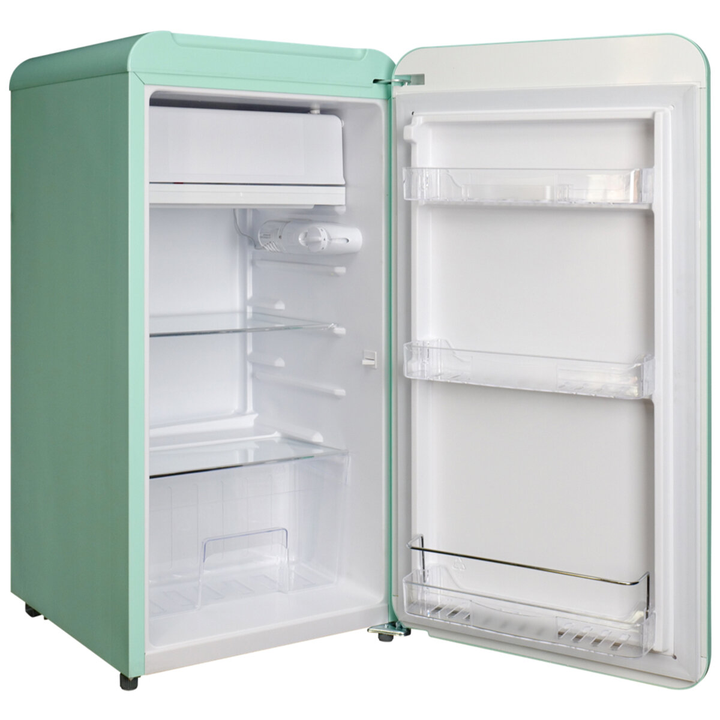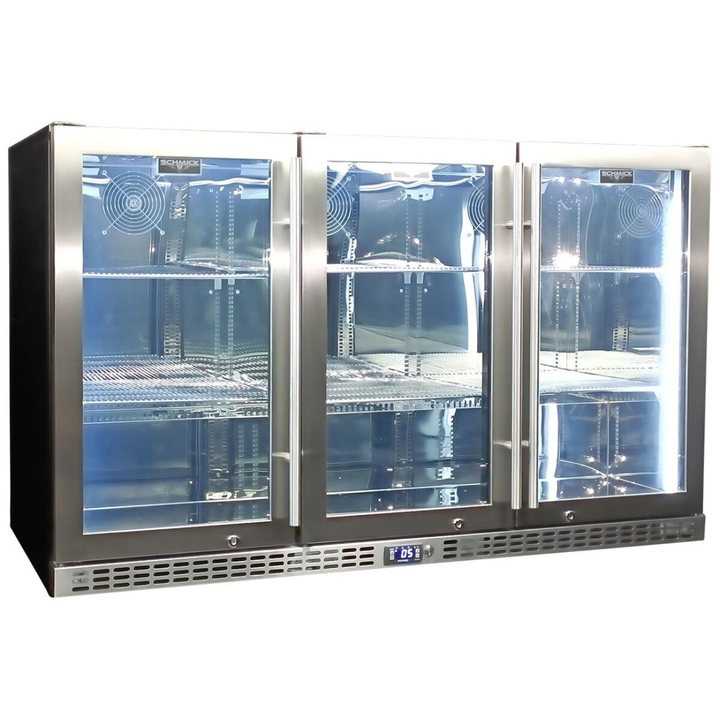Australian Standard Refrigerator Sizes
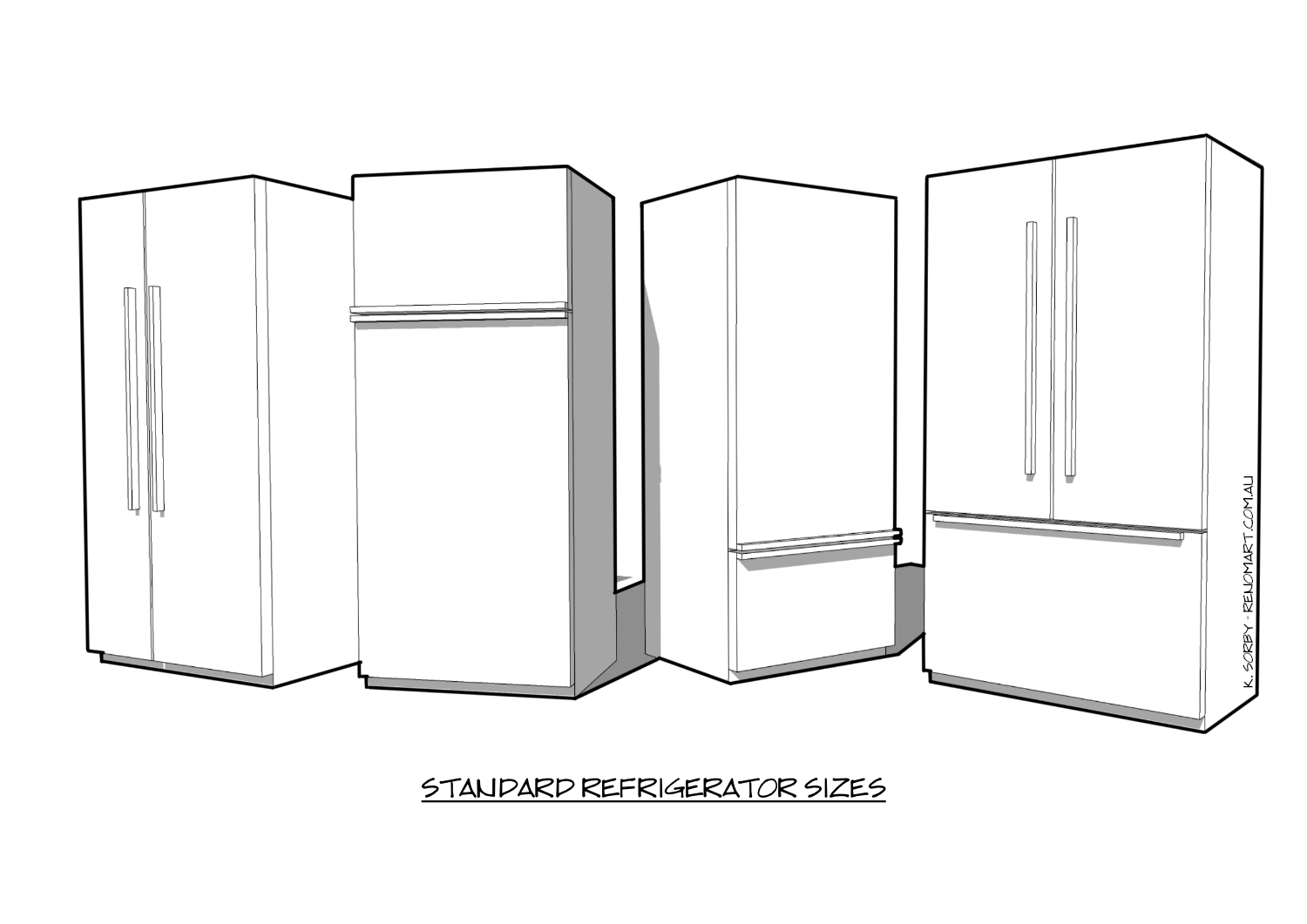
Author: Kevin Sorby - Article Published: September 7, 2019
Australian standard refrigerator sizes range between 470mm (18") to 910mm (36") wide, 837mm (33") to 2027mm (80") high, and 492mm (19") to 810mm (32") in depth. These are typically top mount and bottom mount freezer/refrigerators that are most commonly sold.
When it comes to upgrading or renovating your kitchen, choosing the right fridge size is a crucial decision. Not only does it impact the overall aesthetic and functionality of your kitchen, but it also affects daily life and food storage. In this article, I will provide a comprehensive guide to standard fridge sizes, the difference between them, and how to choose the best one for your home.
Table of Contents
- Standard Fridge Space
- Differences Between Standard Fridge Sizes
- Choosing The Right Fridge Size For Your Home
- Refrigerator Types And Their Dimensions
- Typical Top Mount Fridge / Freezer Dimensions
- Typical Bottom Mount Fridge / Freezer Dimensions
- Typical Side By Side Fridge / Freezer Dimensions
- Typical French Door Fridge / Freezer Dimensions
- Typical Pigeon Pair Fridge / Freezer Dimensions
- Biggest Fridge Size
- Small Refrigerator Sizes
- Typical Wine Fridge Sizes
- Typical Bar Fridge Sizes
- Standard Refrigerator Size Chart
- Refrigerator Capacity
Standard Fridge Space
The standard kitchen refrigerator space is 900mm wide x 1800mm high x 600mm depth and suits a wide range of differing fridge sizes.
Differences Between Standard Fridge Sizes
Compact refrigerators are the smallest and most affordable option, making them ideal for small apartments, dorm rooms or as a secondary fridge. However, they have limited storage capacity and are not suited for large families or those who like to stock up on groceries.
Standard refrigerators are the most popular choice for most households. They offer a balance between storage capacity and price, and can accommodate the needs of most families. They typically come in widths between 600mm to 900mm.
Large refrigerators are the most spacious option and are perfect for large families or those who like to entertain often. They can accommodate more groceries and larger items, such as party platters and drinks. They typically come in widths between 900mm to 1200mm.
Choosing The Right Fridge Size For Your Home
When choosing the right fridge for your home, consider the following factors:
- Space: Measure the space accurately in your kitchen where you plan to put the fridge to ensure it will fit. Take notice of where the power point is located.
- Family Size: Consider the number of people in your household and how much food storage you will need.
- Lifestyle: If you entertain often or like to stock up on groceries, a larger fridge may be a better option.
Refrigerator Types And Their Dimensions
There are five main types sold in Australia (not including wine, bar and integrated refrigerators) and they all have different features, as well as differing dimensions to consider.
The five refrigerator types are:
- Top Mount Freezer
- Bottom Mount Freezer
- Side by Side
- French Door
- Pigeon Pair
Typical Top Mount Fridge / Freezer Dimensions
Top mount refrigerators (meaning the freezer compartment is at the top) are the most common type in Australian kitchens today.
They offer the smallest average storage capacity for both fridge and freezer compartments. They're ideal for individuals, small households, or kitchens with limited space.
Apart from being the most popular style of fridge, the top mount fridge design is the simplest among fridge freezers. Both compartments have single doors, and the freezer typically consists of one shelf in an open space. This configuration makes cleaning easier and prevents fridge spills from entering the freezer.
However, the fridge's bottom shelf is close to floor level, requiring frequent bending to access everyday items. This could be challenging for those with knee or back problems.
Typical top mount refrigerator dimensions are:
470mm (18") to 836mm (33") wide
837mm (33") to 1872mm (74") high
492mm (19") to 810mm (32") depth
Top mount fridges are generally less expensive than bottom mount models due to their smaller size and simpler design. Their energy consumption and running costs are comparable to bottom mount models and typically lower than side-by-side or French door fridges.

Handy Tip - Make sure the refrigerator door hinge position suits your kitchen layout. A left hinged door can spell disaster if the fridge is located on the extreme right hand side of the kitchen because it will inhibit movement from the fridge to benchtop. If it is next to a wall, the hinge should be on the same side as the wall. Thankfully some manufacturers even have reversible hinges!
Typical Bottom Mount Fridge / Freezer Dimensions
Bottom mount refrigerators (meaning the freezer compartment is at the bottom) are the most popular type that people buy when updating or replacing their old one.
They typically offer more spacious fridge and freezer sections compared to top mounts, making them suitable for small-to-mid-sized households.
They also offer several ergonomic and practical benefits. Its eye-level fridge section allows easy access to fresh food, making it particularly advantageous for individuals with back or joint issues.
This layout also enhances safety by keeping certain items out of children's reach on higher shelves.
Additionally, these models often come equipped with more sophisticated features, including complex freezer compartments with multiple drawers, providing enhanced organization and storage options for frozen goods.
Typical bottom mount refrigerator dimensions are:
480mm (19") to 910mm (36") wide
1265mm (50") to 2027mm (80") high
544mm (21") to 773mm (30") depth

Handy Tip - Consider an 'invertor compressor' over a common 'rotary compressor' when buying a new fridge. An invertor compressor constantly monitors the internal temperature and adjusts its compressor speed accordingly, saving you money.
Typical Side By Side Fridge / Freezer Dimensions
Side-by-side refrigerators (double door fridge) are spacious appliances featuring a freezer section on the left and a refrigerator section on the right. Available in various stylish finishes, they offer several advantages:
- Easy access to both fresh and frozen foods
- Ability to store frequently used items at eye level
- Lower shelves for long-term food and drink storage
However, there are some considerations:
- Narrow compartments make storing wide items challenging
- May not fit all kitchen layouts; careful measurement is crucial
- Larger size typically means higher energy consumption
When choosing a side-by-side fridge, consider:
- Available fridge space opening in your kitchen (including door clearance)
- Energy Star rating for efficiency
- Your storage needs, especially for wide items
This style offers ample storage and convenience but requires thoughtful planning to ensure it suits your kitchen and lifestyle.
Also, side by side fridges usually have an ice / water dispenser on the freezer side which can eat up a lot of freezer space.
Typical side by side refrigerator (double door fridge) dimensions are:
895mm (35") to 1210mm (48") wide
1756mm (69") to 1852mm (73") high
630mm (25") to 784mm (31") depth

Handy Tip - Look for a fridge with features that you'll find useful such as ice trays in the freezer, a variable temperature storage drawer in the fridge or a chilled water dispenser in the door.
Typical French Door Fridge / Freezer Dimensions
French door refrigerators offer notable advantages in terms of space and energy efficiency. Their design incorporates wider shelves behind double doors, easily accommodating larger items such as pizza boxes and party platters. This configuration is complemented by a sliding bottom freezer drawer, enhancing accessibility to frozen goods.
In addition to their smart use of space, these refrigerators are recognized for their energy-saving qualities. The compartmentalized structure minimizes cold air loss when doors are opened, contributing to lower electricity consumption. This design feature not only helps maintain consistent internal temperatures but also assists in keeping energy costs under control, making French door models an appealing choice for both practical storage and economical operation.
Typical French door refrigerator dimensions are:
685mm (27") to 1210mm (48") wide
1698mm (67") to 2039mm (80") high
610mm (24") to 924mm (36") depth
Beware- French door fridges suffer from the same reduced freezer capacity as a side by side fridge if an ice / water dispenser is fitted.

Handy Tip - Measure your doorways / hallways to make sure your new refrigerator can fit and be easily navigated inside your home.
Typical Pigeon Pair Fridge / Freezer Dimensions
A 'pigeon pair' consists of a standalone single-door refrigerator placed alongside a matching single-door upright freezer. This configuration deviates from the conventional combined fridge-freezer units most consumers are familiar with, instead treating the cooling and freezing functions as separate entities.
This arrangement offers both aesthetic and practical benefits. Visually, it creates a symmetrical and cohesive look in the kitchen. Functionally, it provides an expansive amount of both refrigeration and freezer space. The increased capacity makes pigeon pairs particularly well-suited for larger households or those who frequently entertain or bulk-buy groceries.
By separating the fridge and freezer into two distinct units, this setup allows for more specialized storage options and potentially more efficient temperature control. It's an investment that can significantly enhance a kitchen's storage capabilities and overall functionality, especially for families or individuals with extensive cold storage needs.
Typical pigeon pair refrigerator dimensions are:
550mm (22") single unit to 1210mm (48") wide
1420mm (56") to 1852mm (73") high
544mm (21") to 720mm (28") depth
Handy tip - Pigeon pair fridges offer more flexibility because both units can be kept in a different part of the kitchen. Great if you want to have a symmetrical kitchen layout.

Biggest Fridge Size
The biggest fridge size for large families is the LG 847L Instaview French Door Fridge. It has a whopping 847 litre capacity.
The dimensions of the fridge are 914mm wide x 918mm depth x 1792mm high.
Small Refrigerator Sizes
Small refrigerators (compact or mini) are compact, convenient units designed for saving space and lower costs.
They are popular space savers, especially in studio apartments. Because of their small size they can often fit in under utilised spaces such as under stair wells and walk-in pantries.
Handy Tip - The cost of running a small or compact refrigerator may be nearly as much as a full-size one!
Typical Wine Fridge Sizes
Wine fridges store your wine collection at the optimum temperature for cellaring or drinking. They look stylish and have designs that complement modern kitchens.
Typical wine fridge dimensions are:
295mm (12") to 900mm (35") wide
450mm (18") to 1930mm (76") high
478mm (19") to 786mm (31") depth
Don't confuse a wine cabinet with a wine fridge. Wine cabinets are designed for long term cellaring.
Typical Bar Fridge Sizes
Bar fridges are affordable and compact. Perfect for a small kitchen or studio apartment. Commercial bar fridges can be as wide as 1200 to 2230mm (two or four doors).
Typical bar fridge dimensions are:
430mm (20") to 2230mm (88") wide
475mm (19") to 1800mm (71") high
450mm (18") to 700mm (28") depth
The freezer in a bar fridge is very small and only suitable for freezing ice. Consider a bar freezer instead.
Standard Refrigerator Size Chart
The standard refrigerator size chart (below) shows you at a glance both refrigerator type, as well as their typical dimension ranges in metric and imperial.
Fridge Type | Width | Height | Depth |
Top Mount | 470mm to 836mm (18" to 33") | 837mm to 1872mm (33" to 74") | 492mm to 810mm (19" to 32") |
Bottom Mount | 480mm to 910mm (19" to 36") | 1265mm to 2027mm (50" to 80") | 544mm to 773mm (21" to 30") |
Side by Side | 895mm to 1210mm (35" to 48") | 1756mm to 1852mm (69" to 73") | 630mm to 784mm (25" to 31") |
French Door | 685mm to 1210mm (27" to 48") | 1698mm to 2039mm (67" to 80") | 610mm to 924mm (24" to 36") |
Pigeon Pair | 550mm to 1210mm (22" to 48") | 1420mm to 1852mm (56" to 73") | 544mm to 720mm (21" to 28") |
Wine Fridge | 295mm to 900mm (12" to 35") | 450mm to 1930mm (18" to 76") | 478mm to 786mm (19" to 31") |
Bar Fridge | 430mm to 2230mm (20" to 88") | 475mm to 1800mm (19" to 71") | 450mm to 700mm (18" to 28") |
Fridge Type | Width | Height | Depth |
N.B Fridge size information obtained from Appliances Online.
Handy Tip - Always measure your kitchen's available space before you buy. Make sure you follow the manufacturers guidelines, leaving some extra room for ventilation and door swing clearance.
If you are shopping for a new fridge and are overwhelmed by all of the options available, then take a look at the refrigerator buying guide video below.
When choosing a new refrigerator or freezer for your new kitchen renovation, size or capacity is the first thing you should think about along with energy efficiency.
Different models will better suit different households. The popular top mount freezer or bottom mount freezer should be fine for most singles, couples and small families.
Larger families will appreciate the extra capacity of a side-by-side or French door unit, though these types or refrigerators do take up more kitchen space.
Refrigerator Capacity
Refrigerator size or storage capacity is based on the number of occupants in the home.
Recommendations for occupants / capacity are as follows.
- 1 to 2 occupants require a capacity of 200 to 380 litres
- 3 to 4 occupants require a capacity of 350 to 530 litres
- 5 + occupants require a capacity of 440 litres minimum
For every occupant over 5, add approximately 29 litres of fridge storage capacity per extra occupant.
Handy Tip - Always check the refrigerator Energy Star rating. The more stars, the more money you'll save on running costs over time. It will also help you to compare similar sizes refrigerator energy costs per year.
How Accurate Is The Reported Fridge Capacity?
For a long time, the general storage area of a refrigerator has been a grey area because manufacturers choose to promote parts of the fridge that may be inaccessible for instance, the volume of ductwork.
In August 2021, the Australian government has mandated a new standard to measure the actual capacity of a fridge. This is great news for consumers because it will give you a more accurate measure of how much real storage space is available to be used.
Read more about Greenhouse and Energy Minimum Standards (Household Refrigerating Appliances) Determination 2019
N.B Standard refrigerator sizes stated above are approximate.

